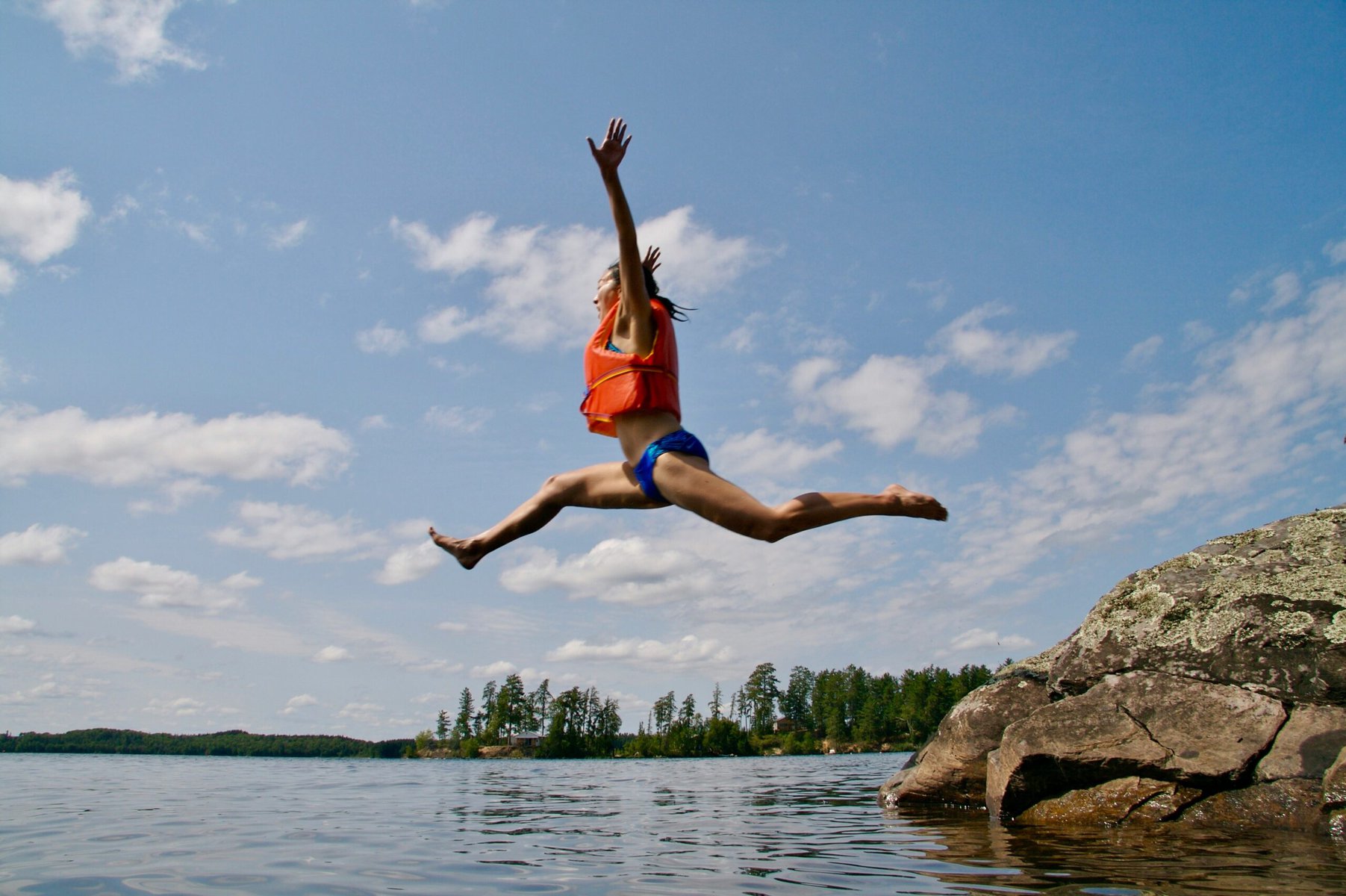Pennsylvania law requires every person on a boat to have a USCG-approved life jacket. This article explains the Pennsylvania life jacket law, including age requirements, seasonal regulations, and specific rules for different watercraft.
Key Takeaways
- Every individual on a boat in Pennsylvania must have access to a USCG-approved personal flotation device (PFD), ensuring compliance and safety.
- Children aged 12 and under are required to wear a life jacket on boats 20 feet or shorter, emphasizing the importance of proper fitting and supervision.
- Boaters must adhere to seasonal regulations requiring the wearing of life jackets from November 1 till April 30, and different watercraft have specific life jacket rules to enhance safety.
Understanding PA Life Jacket Law

Navigating the waters of Pennsylvania requires more than just boating skills; it mandates a thorough understanding of the state’s life jacket laws. Every person onboard must have a serviceable, USCG-approved life jacket accessible at all times. This regulation ensures that in case of an emergency, everyone on board has immediate access to a personal flotation device (PFD) that meets stringent safety standards.
Pennsylvania mandates that each boat carry a USCG-approved life jacket for every person onboard. This requirement ensures preparedness, compliance with state laws, and the safety of all passengers.
USCG Approved Life Jackets in PA
In Pennsylvania, the safety of boaters is paramount, which is why life jackets must meet the U.S. Coast Guard’s standards. Inflatable life jackets, while convenient, must be Coast Guard-approved to be considered compliant. Pool floats and non-approved inflatable PFDs do not meet the criteria and should never be used as substitutes.
Different watercraft types in Pennsylvania have specific life jacket regulations suited to their unique needs. Boaters must ensure compliance and safety by using USCG-approved PFD, a critical safety measure that can save lives in emergencies. Those engaging in activities such as kayak fishing or water sports should strongly consider additional safety features, such as adjustable straps and a proper fit, to enhance protection.
Children’s Life Jacket Laws by State
Life jacket laws vary by state, primarily focusing on age requirements and specific vessel types.
- Florida Life Jacket Law: Children under 6 years old must wear a U.S. Coast Guard-approved life jacket (Type I, II, or III) when on a boat under 26 feet in length while it is moving.
- Maryland Life Jacket Law: Children under 13 are required to wear a U.S. Coast Guard-approved life jacket (Type I, II, III, or V) while underway on recreational vessels less than 21 feet in length, unless they are below deck or in an enclosed cabin.
- Colorado Life Jacket Law: Children under 13 must wear a life jacket while the vessel is underway unless they are below deck or in an enclosed cabin.
- Montana Life Jacket Law: Children under 12 years old are required to wear a U.S. Coast Guard-approved life jacket at all times while on moving vessels shorter than 26 feet.
- Alabama Life Jacket Law: Children under 8 are required to wear a life jacket at all times while on any vessel, unless in an enclosed cabin.
- Nevada Life Jacket Law: Children under 13 must wear a life jacket while the vessel is underway unless they are in an enclosed cabin.
Types of USCG-Approved Life Jackets
USCG-approved life jackets come in several types, each designed for specific conditions and activities. Most states require at least one U.S. Coast Guard Approved Type I, II, or III life jacket per person on board a kayak.
Type I life jackets provide the highest level of buoyancy, making them suitable for offshore boating where rescue may take longer. These jackets are capable of turning most unconscious wearers face up, ensuring their safety.
Type II life jackets, designed for calm inland waters, offer less buoyancy than Type I jackets. They are suitable for scenarios where quick rescue is expected but not ideal for rough conditions.
Type III life jackets are designed for various activities, offering comfort and mobility but not guaranteeing to turn an unconscious wearer face-up.
How to Identify a USCG-Approved Life Jacket
Identifying a USCG-approved life jacket is straightforward. The life jacket label on the jacket displays the Coast Guard’s approval number and specific information about the type and intended use, including details about the USCG-approved PFD.
The label also includes the manufacturer’s name and model number, which can be verified for compliance. Checking the weight and size ratings ensures the life jacket is suitable for the intended user, confirming the jacket’s buoyancy rating and proper use.
Age Requirements for Wearing Life Jackets in PA

Pennsylvania’s age requirements for life jackets are stringent to protect younger boaters. Children under 13 years old must wear a life jacket while boating in most states. Children aged 12 and under must wear a USCG-approved life jacket on boats 20 feet or shorter, including canoes, manually propelled vessels, kayaks, and paddleboards, ensuring their protection on the water.
Proper fitting is crucial for life jackets to function correctly. A wearable life jacket that rises to a child’s chin when lifted by the shoulders is too large. Ensuring a snug fit is vital; a jacket that lifts up when pulled is too loose and could fail in an emergency.
Always supervise children in or near water, even when they are wearing life jackets.
Seasonal Regulations
From November 1 through April 30, Pennsylvania mandates all boaters to physically wear a life jacket. Cold water temperatures during this period increase the risk of hypothermia, making it essential for boaters on vessels under 16 feet and all canoes and kayaks to wear life jackets. This rule applies even if two or more persons are on board.
These regulations aim to protect during colder months when falling into the water can be life-threatening. Wearing life jackets during this period helps prevent boating fatalities and enhances the safety of all boaters. The Coast Guard strongly suggests compliance with these regulations to ensure personal safety.
Special Rules for Different Watercraft
Different watercraft have rules regarding life jacket use to address unique safety needs. For instance, all participants in water skiing and similar water sports activities, including watercraft users, must wear life jackets.
Violations of these rules can lead to fines and increased accident risks. On certain lakes managed by the U.S. Army Corps of Engineers in Pittsburgh, everyone in boats under 16 feet and in all canoes, kayaks, and paddleboards must wear a life jacket.
Kayaking and Canoeing
While kayaking or canoeing in Pennsylvania, wearing a life jacket is mandatory. These life jackets must be in good condition, appropriately sized, and readily available to each individual on board, ensuring immediate access and adequate buoyancy in emergencies.
Kayaking and canoeing are popular water sports activities, and adhering to these regulations is crucial for safety. Properly maintained and fitted life jackets significantly reduce the risk of drowning and other water-related incidents.
Paddle Boards
All paddleboard users must wear a USCG-approved PFD while on the water. This requirement ensures the safety of the board users, who are often in more precarious positions compared to those in traditional boats.
Traditional life jackets and personal floatation devices provide necessary buoyancy and can prevent drowning in case of falls or accidents, making compliance essential for a safe and enjoyable paddle boarding experience.
Personal Watercraft
Operators and passengers of personal watercraft, such as jet skis, must wear life jackets at all times. These regulations are strictly enforced to enhance safety due to the high speeds and potential for accidents associated with personal watercraft.
Failing to wear a life jacket while operating or riding on personal watercraft can lead to fines and increased accident risks. Compliance with these rules ensures the safety of all riders and operators.
Penalties for Non-Compliance
Violations of Pennsylvania’s life jacket regulations can result in fines of $50 for non-compliance. Penalties may vary based on the specific infraction, such as not having enough life jackets on board or not wearing them as required.
Beyond financial penalties, non-compliance increases risks during water activities. Adhering to these regulations is a legal obligation and a critical safety measure to protect lives.
Additional Safety Tips

Always check the weather forecast before heading out. Inform someone on the land about your boating plan and expected return time for enhanced safety. Avoid consuming alcohol when operating a boat to maintain full control and awareness.
A boating safety course can improve your knowledge and confidence in handling your vessel. Always carry a first aid kit, extra flotation devices, a fire extinguisher, and a sound-signaling device on board.
Following navigation rules and maintaining a safe speed significantly reduce the risk of accidents.
Summary
In summary, understanding and complying with Pennsylvania’s life jacket laws is essential for ensuring safety on the water. From the specific requirements for different watercraft to the importance of USCG-approved life jackets, these regulations are designed to protect lives.
By following these guidelines and additional safety tips, boaters can enjoy their time on the water while minimizing risks. Prioritizing safety and adhering to the laws will ensure a safe and enjoyable boating experience for everyone.
Looking for the perfect life jacket for your next trip? Check out our collection!
Contact Us
Water safety isn’t just about rules—it’s about being prepared with the right knowledge and equipment. If you have questions about regulations, need advice on the best safety gear, or want to ensure you’re fully equipped for your time on the water, our team is here to help.
We also offer a selection of carefully chosen water safety products designed to keep you and your loved ones protected. You can explore them here.
Feel free to reach out with any inquiries or concerns. Your safety on the water starts with the right information and the right gear.
Frequently Asked Questions
What are the basic requirements for life jackets in Pennsylvania?
In Pennsylvania, it is required that every individual on a boat has a USCG-approved PFD readily accessible at all times. Compliance with this regulation ensures safety for all passengers.
Are there specific life jacket requirements for children in Pennsylvania?
Yes, in Pennsylvania, children aged 12 and under are required to wear a USCG-approved life jacket while on boats that are 20 feet long or less, as well as on canoes, kayaks, and paddleboards. Compliance with this regulation is essential for ensuring their safety.
What are the seasonal regulations for wearing life jackets in Pennsylvania?
All boaters in Pennsylvania are required to wear a life jacket on boats under 16 feet, as well as on canoes and kayaks, from November 1 through April 30. This regulation is critical for safety during these months.
What are the penalties for not complying with life jacket laws in Pennsylvania?
Failure to comply with life jacket laws in Pennsylvania may result in a fine of $50, along with heightened risks during water activities. Thus, adhering to these laws is essential for safety.
How can I identify a USCG-approved life jacket?
You can identify a USCG-approved life jacket by locating the label that displays the Coast Guard’s approval number, along with the manufacturer’s name and model number. Ensure this information is present to confirm compliance with safety standards.



